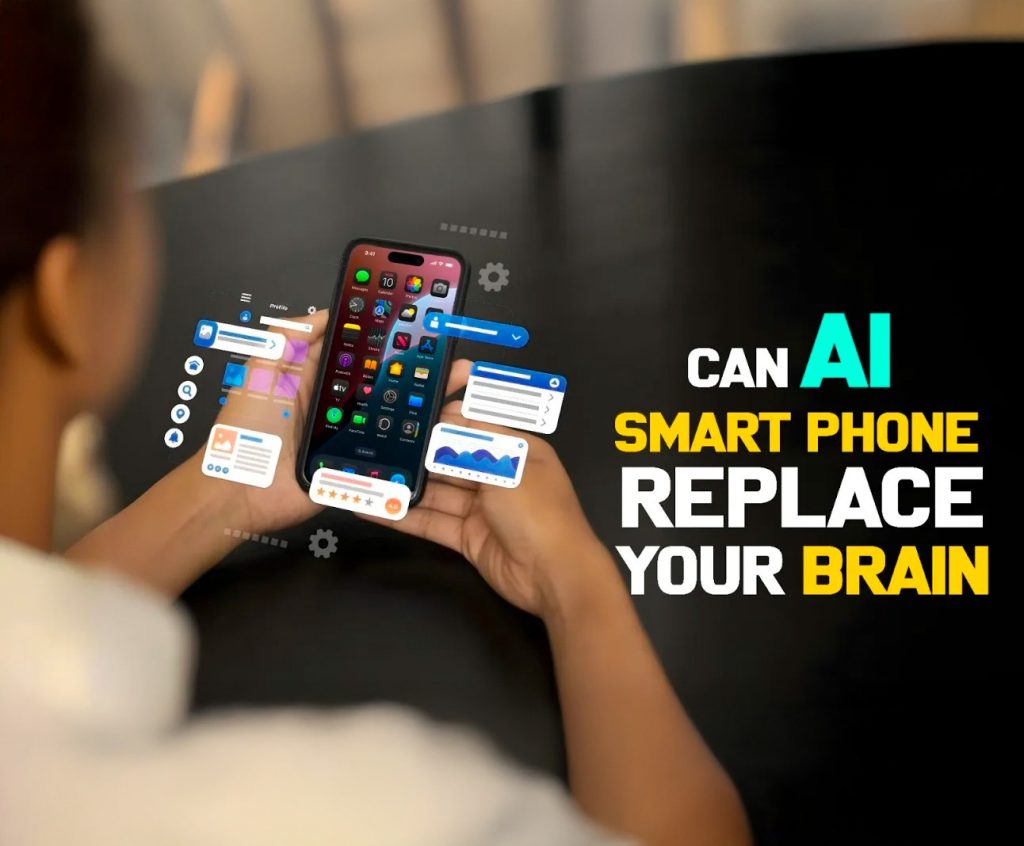The Future of Smartphone AI: How Artificial Intelligence is Transforming Mobile Technology
Welcome back to the blog! Here, we’re diving into the fast-evolving world of smartphone AI technology—an innovation that’s not just enhancing user experience but also reshaping how we interact with our devices on a daily basis.
What Is Smartphone AI?
At its core, Artificial Intelligence (AI) in smartphones refers to the integration of intelligent algorithms that allow devices to learn from user behavior and adapt over time. This means your phone isn’t just smart—it’s getting smarter.
From personalized recommendations to real-time voice interactions, AI is embedded in features like:
- Voice assistants (Siri, Google Assistant, Alexa)
- Camera enhancements
- App usage prediction
- Battery optimization
These features rely on machine learning and natural language processing to interpret data and improve performance (Ray, 2023).
Apple Intelligence: AI at the Core of Apple Devices
One of the most notable players in smartphone AI is Apple. With its Apple Intelligence initiative, the company integrates generative AI directly into its ecosystem—across iPhones, iPads, and Macs.
Key features include:
- Writing Tools that auto-summarize or suggest text
- On-device processing to maintain privacy
- Enhanced communication tools that understand context
Apple’s approach emphasizes user privacy by processing most AI tasks locally on the device, reducing dependence on cloud-based servers (Apple Inc., 2024).
Camera Enhancements: Your Pocket Photographer
Thanks to AI, smartphone cameras now deliver professional-grade photos without the need for manual settings. AI algorithms can:
- Recognize scenes (like food or landscapes)
- Adjust lighting and exposure in real time
- Enhance image quality post-capture
This is done using neural processing units (NPUs) that analyze scenes within milliseconds, helping users capture the perfect shot effortlessly (TechRadar, 2024).
Voice Assistants and Smart Features
AI-powered voice assistants have come a long way since their early days. Today, they:
- Understand context better
- Learn from user habits
- Offer personalized suggestions
Whether you’re setting reminders, playing music, or searching the web, assistants like Siri and Google Assistant are continuously evolving through AI learning loops (Smith, 2023).
Security and Privacy: Smarter Protection
Modern smartphones use AI not just for convenience but also for protection. Key security features include:
- Facial recognition and fingerprint unlock
- Spam call detection
- Real-time threat analysis
AI helps identify suspicious behaviors or patterns to keep your data safe. Encryption protocols combined with AI threat detection ensure robust security frameworks (Chen, 2024).

The Future of AI in Smartphones
As AI continues to evolve, smartphones are becoming even more indispensable. We can expect:
- More seamless voice interactions
- Predictive behaviors based on routines
- Smarter health tracking and diagnostics
- Deeper personalization in apps and interfaces
In short, your phone will soon know what you need—before you do.
What’s your favorite AI-powered feature on your smartphone? Share your thoughts in the comments below!
Don’t forget to visit our website for more insights on tech trends, AI innovations, and the future of mobile devices.
For further assistance, visit our channel and refer the video
Can AI Replace Your Brain? Smartphones Becoming Too Smart : Future Smartphone : @turilytix

References
- Apple Inc. Apple Intelligence. 2024, www.apple.com/apple-intelligence/.
- Chen, Lian. “AI and Mobile Security: What You Need to Know in 2024.” Wired Tech Review, vol. 18, no. 3, 2024, pp. 44–49.
- Ray, Siddharth. “The Role of AI in Next-Gen Smartphones.” Digital Trends, 5 Jan. 2023, www.digitaltrends.com/mobile/ai-in-smartphones/.
- Smith, Janelle. “Voice Assistants and the Evolution of Mobile AI.” The Verge, 12 Nov. 2023, www.theverge.com/voice-assistants-ai.
- “Best AI Camera Phones of 2024.” TechRadar, 15 Mar. 2024, www.techradar.com/best/ai-camera-smartphones.
Share This :

